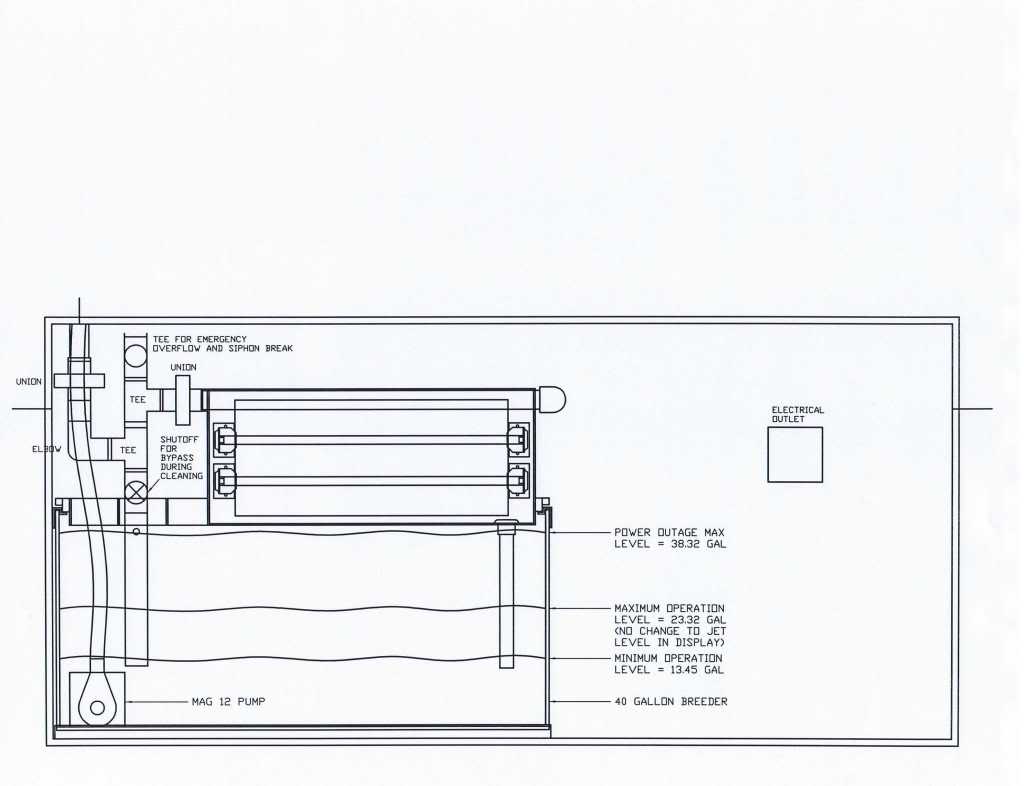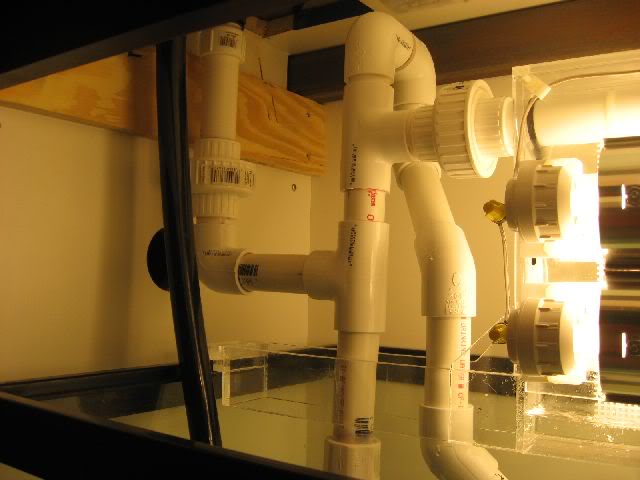Floyd R Turbo
Aquarium Advice Addict
I was reading up on Durso Standpipes and there was a part in one DIY page that suggested the use of teflon tape wrapped 3 times around a pipe to go into another fitting, saying it would ensure a tight fit.
Exploded Parts List - Page 4
This leads me to my question. For my tank to sump piping, I have always used PVC cement at all connection points. The problem I keep running into is that for certain requirements and dimension matching for routing the pipe, it is very difficult to get everything together exactly right, if you're off by the slightest bit, you either have to deal with it or make it all over again. For instance, 2 90's and a T on top of one facing a certain direction. If your 90's are not perfectly aligned, the pipes going in and out will not be parallel. If you T is not twisted right, the pipe out of the side will not be in the direction you intended.
Previously, the solution I saw was to just leave them friction fit. It works, but SW will work into the joint and drip out, and eventually it self-seals, essentially. And this works fine under a low pressure overflow.
But with a system I am working with (the ATS) it requires a little more pressure to build up, no a whole lot, but enough that I didn't want to risk a friction fit.
Would I be able to use this teflon tape wrap idea that is used for a Durso Standpipe to make the fittings tight enough where they wouldn't loosen?
This is a pic of how the PVC goes together

and how it actually turned out

What happened with this first attempt is that the bottom T didn't get on there precisely right, so the whole acrylic box is cocked to one side on the tank. It still works, but I don't want to re-make the thing again and have it not turn out just right.
It would sure make it a heck of a lot easier to get the pipes exactly where I need them to be using a teflon/friction fit, and I would think this would eliminate the slow leak issue.
Has anyone tried this? Also, should I even worry about a friction fit connection letting loose at all? Most times, I need a pipe wrench to loosen really tight friction fit PVC connections, after tapping in with a rubber mallet. So maybe it's not a big deal.
I estimate the pressure to be only about 1 foot of head (max) above the bottom of the tank, so maybe 2-3 feet of head above the 90 below the union right under the tank connection.
Any thoughts?
Exploded Parts List - Page 4
This leads me to my question. For my tank to sump piping, I have always used PVC cement at all connection points. The problem I keep running into is that for certain requirements and dimension matching for routing the pipe, it is very difficult to get everything together exactly right, if you're off by the slightest bit, you either have to deal with it or make it all over again. For instance, 2 90's and a T on top of one facing a certain direction. If your 90's are not perfectly aligned, the pipes going in and out will not be parallel. If you T is not twisted right, the pipe out of the side will not be in the direction you intended.
Previously, the solution I saw was to just leave them friction fit. It works, but SW will work into the joint and drip out, and eventually it self-seals, essentially. And this works fine under a low pressure overflow.
But with a system I am working with (the ATS) it requires a little more pressure to build up, no a whole lot, but enough that I didn't want to risk a friction fit.
Would I be able to use this teflon tape wrap idea that is used for a Durso Standpipe to make the fittings tight enough where they wouldn't loosen?
This is a pic of how the PVC goes together

and how it actually turned out

What happened with this first attempt is that the bottom T didn't get on there precisely right, so the whole acrylic box is cocked to one side on the tank. It still works, but I don't want to re-make the thing again and have it not turn out just right.
It would sure make it a heck of a lot easier to get the pipes exactly where I need them to be using a teflon/friction fit, and I would think this would eliminate the slow leak issue.
Has anyone tried this? Also, should I even worry about a friction fit connection letting loose at all? Most times, I need a pipe wrench to loosen really tight friction fit PVC connections, after tapping in with a rubber mallet. So maybe it's not a big deal.
I estimate the pressure to be only about 1 foot of head (max) above the bottom of the tank, so maybe 2-3 feet of head above the 90 below the union right under the tank connection.
Any thoughts?
